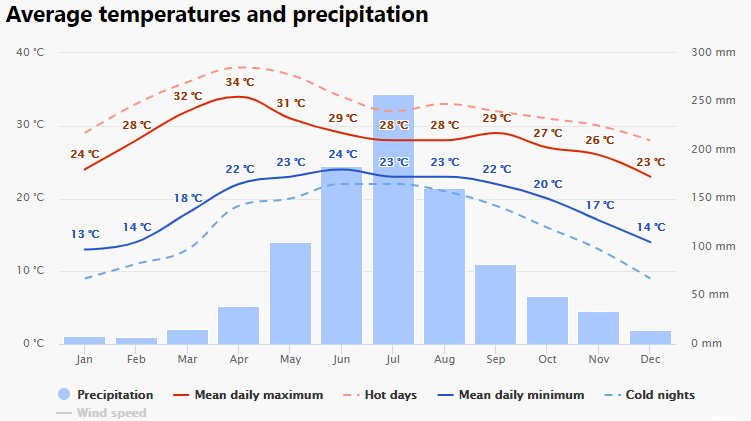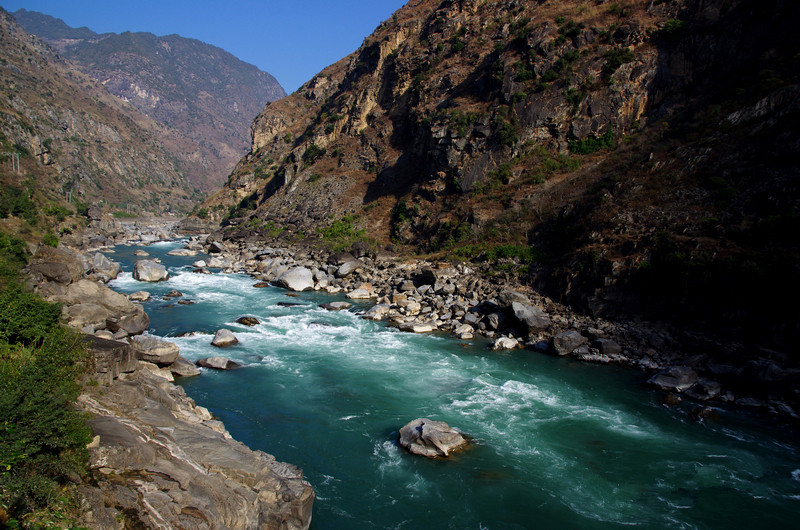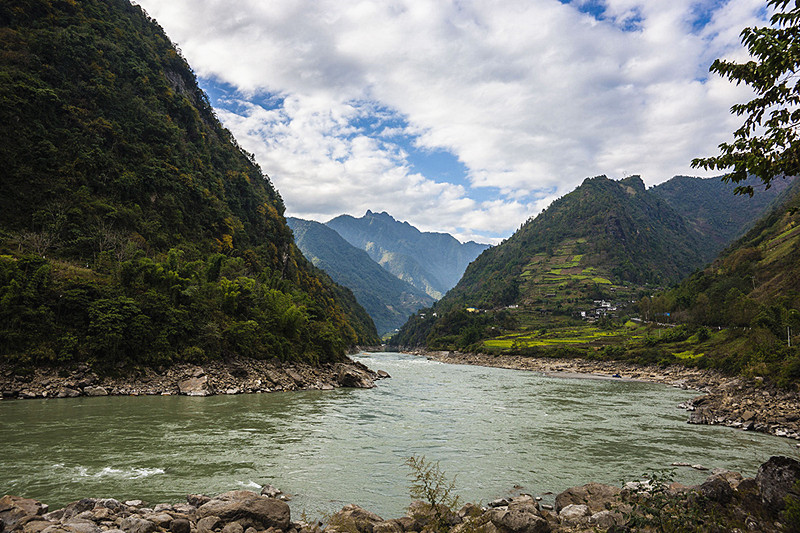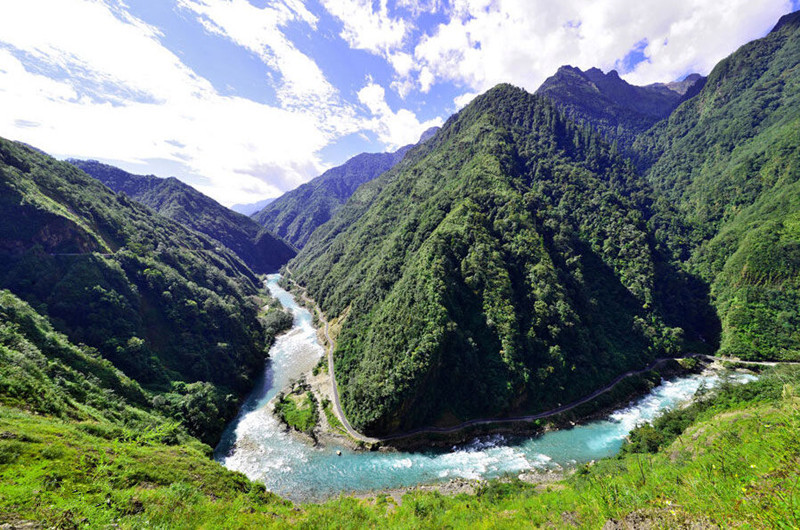Nujiang Climate
Nujiang Climate & Weather
Nujiang climate and weather has three-dimensional climate characteristics. Nujiang, lying in the longitudinal valley area of Hengduan Mountains in western Yunnan, enjoys a plateau monsoon climate at low latitude. Nujiang features clear dry and wet seasons, great temperature difference between day and night and small temperature difference during the whole year. The average temperature is 16.8℃-20.1℃. Due to the landform and latitude, it is colder in its northern part, warmer in the middle and hot in the south; it is cold in the high mountain area, warm in halfway up the mountain and hot along the Nujiang River. The best time to visit Nujiang is September after the rainy season.
Graph of Average Temperatures and Precipitation by Month
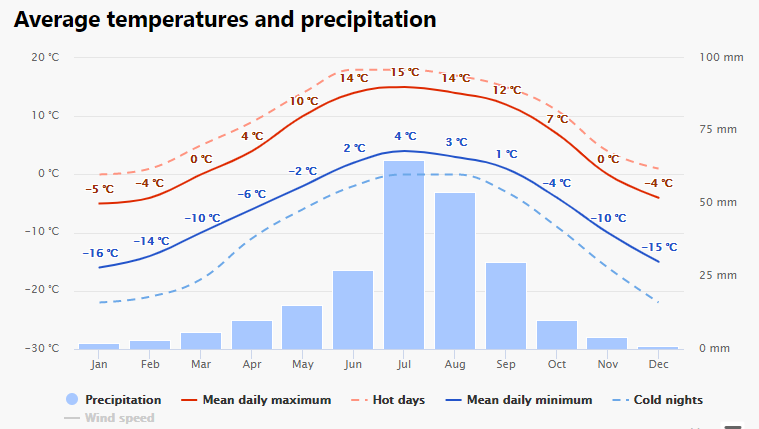
From the chart, we could know that the hottest days occur in June and July, while the July also enjoys the maximum rainfall in the year around. The coldest weather is in Dec and Jan, which are also the driest monthes.
Chart of Sunny Days by Month
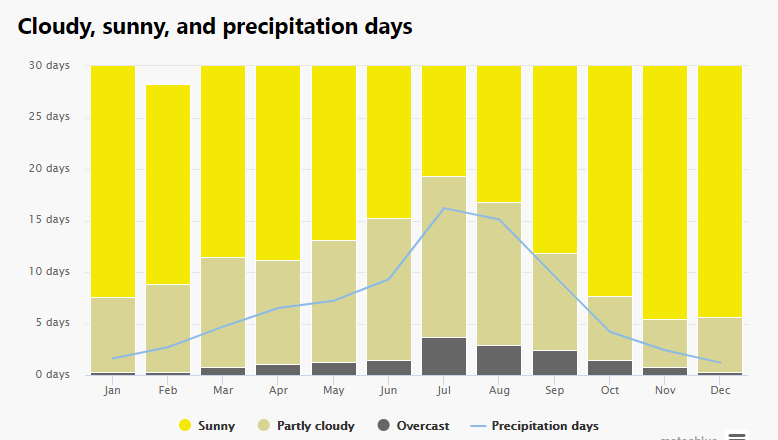
Nujiang Weather and Climate by Month
Four Seasons of Nujiang
Nujiang is located in a low-latitude plateau. Except the Nujiang River valley, the other parts are situated in a high mountain or high-altitude small dam area with an altitude of more than 1200 meters, forming a prototype monsoon climate of low-latitude mountain with small annual temperature difference, with unobvious seasons and prominent vertical variation. The temperature annual range is between 10 ℃ and 15℃. The average temperature of the hottest month is below 23 ℃, and the average temperature of the coldest month is above 7.5 ℃. Except for high mountain regions and low-heat valley regions, most of the regions in Nujiang have no summer, with long spring and autumn seasons lasting for 313 days. Winter is short , most regions have less than 100 days. To summarize, Nujiang enjoys a climate with no severe cold in winter, no intense heat in summer.
What to Pack for Nujiang Travel
The average temperature of Nujiang is 15℃ ~ 26℃. The average temperature during the daytime is 26℃, it is recommended to wear cool clothes such as shirts made of cotton and linen fabric, thin long skirts and thin T-shirts. The average temperature at night is 15℃, it is recommended to wear warm clothes such as suits, jackets, trench coats, casual clothes, jackets, suits, thin sweaters, etc.
Other necessities:
- Floral water, salt In order to prevent mosquitoes and leeches from biting when traveling in Nujiang Gorge, it is suggested to spray insect repellent on the body before departure. After being bitten by leeches in the wild, the leeches are sprinkled with salt or concentrated salt solution, which will immediately die and automatically fall off from the skin.
- Identity document Nujiang is located at the border. Please bring your identification documents for border inspection when traveling to Nujiang.
- Sunscreen, rain gear Nujiang has slightly stronger ultraviolet rays and abundant rainfall. Please pay attention to sun protection and sudden rainfall.
Best Time to Visit Nujiang
Nujiang Prefecture enjoys a subtropical mountain monsoon climate with the characteristics of three-dimensional climate. Nujiang is suitable for touring in all seasons. However, it is hot and rainy in summer. Stone roads built near mountains have extremely poor road conditions, and it is hard and dangerous to walk on the roads in rainy season. Therefore, the best time to visit Nujiang should be from October to April of the next year, especially times around the Spring Festival. There are sevral ethnic festivals celebrated during the Spring Festival period. You can not only enjoy beautiful scenery, but also participate in festivals with unique local features.
Travel Tips for Visiting Nujiang
Although the peak holiday such as Chinese Spring Festival (usually in late Jan or early Feb.) is crowded time for travelling to Nujiang, but it is worth visiting at that time for beautiful scenery and ethnic festival experience. You can avoid the National Day golden week in October.
Further Reading:
- Best Places to Visit in Nujiang Prefecture
- How to Plan Hiking Tour around Nujiang Grand Canyon
- Kunming to Nujiang Bus Schedule and Tickets Booking
- Dali to Nujiang Bus Schedule and Bus Tickets Booking
Regional Climates
- Lushui City Climate
- Gongshan County Climate
- Bingzhongluo Climate
- Fugong County Climate
- Lanping County Climate
- Dulongjiang Climate
Keep Reading

 7 Days GolfingTour
7 Days GolfingTour
 8 Days Group Tour
8 Days Group Tour
 8 Days Yunnan Tour
8 Days Yunnan Tour
 7 Days Shangri La Hiking
7 Days Shangri La Hiking
 11 Days Yunnan Tour
11 Days Yunnan Tour
 6 Days Yuanyang Terraces
6 Days Yuanyang Terraces
 11 Days Yunnan Tour
11 Days Yunnan Tour
 8 Days South Yunnan
8 Days South Yunnan
 7 Days Tea Tour
7 Days Tea Tour
 8 Days Muslim Tour
8 Days Muslim Tour
 12 Days Self-Driving
12 Days Self-Driving
 4 Days Haba Climbing
4 Days Haba Climbing
 Tiger Leaping Gorge
Tiger Leaping Gorge
 Stone Forest
Stone Forest
 Yunnan-Tibet
Yunnan-Tibet
 Hani Rice Terraces
Hani Rice Terraces
 Kunming
Kunming
 Lijiang
Lijiang
 Shangri-la
Shangri-la
 Dali
Dali
 XishuangBanna
XishuangBanna
 Honghe
Honghe
 Kunming
Kunming
 Lijiang
Lijiang
 Shangri-la
Shangri-la
 Yuanyang Rice Terraces
Yuanyang Rice Terraces
 Nujiang
Nujiang
 XishuangBanna
XishuangBanna
 Spring City Golf
Spring City Golf
 Snow Mountain Golf
Snow Mountain Golf
 Stone Mountain Golf
Stone Mountain Golf
